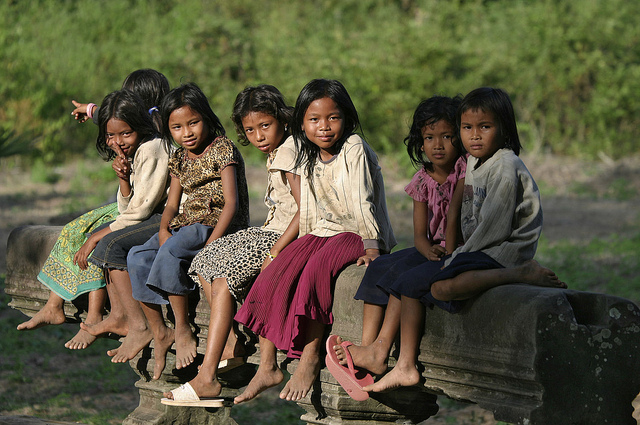Girls’ Education in Cambodia Fights Inequality and Rural Isolation

The Cambodian government sees education as a key to achieving its long-term vision for the country. It is focused on political stability, long-term economic growth, sustainable development, improved living standards and reduced poverty. It has identified girls’ education in Cambodia in particular as an important step in reaching these goals.
Gender Disparities Still an Obstacle in Cambodia
Although Cambodia has made strides in offering equal access to education for boys and girls, the country still suffers from a substantial gender disparity. Because of this, girls’ education in Cambodia is both lacking and unjust. If a Cambodian girl has aspirations of getting an advanced education or entering the workforce, her dream will more than likely be crushed due to the poverty, corruption, cultural norms and lack of schools in rural areas in Cambodia.
Data collected by various international organizations and the Cambodian Ministry of Education shows that boys and girls in Cambodia start primary education at equal rates. However, reports show that the dropout rate for female students increases with each grade. Although the gender gap is continuing to narrow, the gross enrollment rate decreases for female students in both the lower and upper secondary levels.
What Prevents Cambodian Girls from Attending School?
Girls’ education in Cambodia is compromised because of widespread poverty; Cambodia is one of the poorest countries in Southeast Asia. According to the Asian Development Bank, 72 percent of the population lives on less than $3 per day. Children living in rural areas are more than likely from poor families; therefore, they will struggle to obtain an education. Poverty is interlinked with the issue of girls’ education in Cambodia, as many poor parents will prioritize their son’s education over their daughter’s.
Cultural norms in Cambodia confine many of these girls to a life full of domestic duties, such as housework, cooking and caring for children. With the corruption and poverty that Cambodia faces today, as well as the gender disparities and lack of schools in rural areas, Cambodian girls still do not have the same opportunities as Cambodian boys.
The Good News Regarding Girls’ Education in Cambodia
Fortunately, there are many organizations who have taken notice of the inequalities in girls’ education in Cambodia and are creating opportunities for these girls. A program called OPTIONS, run by World Education with financial support from UNICEF and the U.S. Department of Labor, provides scholarships that enable girls who are at risk of dropping out to remain in school. In poor areas of Cambodia such as Prey Veng, where many families are forced to migrate due to persistent floods and droughts, the scholarships also help prevent girls from being trafficked or sexually exploited.
To address the needs of undereducated girls, the program offers girls in grades five and six weekly skills classes on a wide range of topics, such as trafficking, reproductive health, sexual abuse and vocational awareness. Girls between the ages of eight and 12 who are out of school can attend courses that aid them in reintegrating in the formal system after one year. For girls over the age of 12, the offerings include basic and functional literacy courses and apprenticeships with local employers.
World Bank Project Ensures Rural Girls Can Access Schools
The World Bank’s Board of Executive Directors approved $100 million in financing for two Cambodian projects in April 2017. Both projects will contribute to improving the quality of secondary schools and making rural roads better connected and resistant to severe weather impacts.
The first project, the Secondary Education Improvement Project, is a five-year project for lower secondary schools. The project has many different goals, including strengthening school management, improving the qualifications of teachers and school directors, and providing better school facilities by renovating 100 schools and building 30 new ones. This alone is expected to impact more than 16,000 students, 2,200 teachers, 310 school directors and deputy directors and 1,500 school staff members.
The second project, the Southeast Asia Disaster Risk Management Project, will refine and improve the connectivity of rural communities, which are isolated from mainstream development due to poor road conditions. This project will rehabilitate about 150 miles of rural roads in six provinces and will benefit about 3.5 million residents.
“Improving rural roads is central to poverty reduction in Cambodia, since 79 percent of the population and 91 percent of the poor live in rural areas,” said Inguna Dobraja, the World Bank’s Country Manager for Cambodia. “Better and weather resilient roads will help students go to school, families visit health centers and farmers from across Cambodia bring their products to markets.”
Although it is an unfortunate reality that many hopes for girls’ education in Cambodia are destroyed and unfulfilled due to cultural norms, poverty and gender disparities, the gap between boys and girls in education is continuing to narrow, and organizations such as UNICEF and the World Bank are working to bring about a future where more Cambodian girls will receive a quality education.
– Angelina Gillispie
Photo: Flickr
